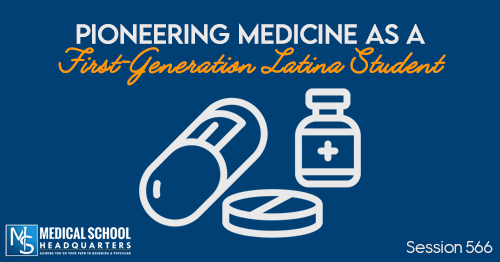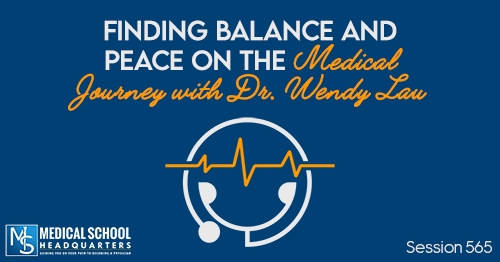
What’s the Difference Between DO and MD?
MDs practice allopathic medicine, the classical form of medicine focused on diagnosing and treating human diseases. DOs practice osteopathic medicine, which views the patient more holistically to reach a diagnosis rather than treating symptoms alone.
That’s the typical understanding. But how much of a difference is there really? And how much does the DO vs. MD difference matter for a premed deciding where to apply to medical school?
In this post, I’ll cover the philosophy, history, training, reputation, and salary differences between MD and DO to help you decide.
The Short Answer: MDs and DOs Are Mostly the Same
MD and DO are the same for most purposes. That’s the practical answer. MDs and DOs are both capable of seeing patients, prescribing medicine, and doing surgeries.
No specialties are off-limits to DOs. Some people have concerns about matching into the most competitive specialties as a DO, but competitive applicants still do.
DOs promote their approach as being more “holistic,”—but as explained below, this doesn’t always play out in the real world.
The most significant actual DO vs. MD difference is that DOs learn osteopathic manipulative treatment (OMT) as an additional way to treat patients.
At the end of the day, it doesn’t really matter if you’re an MD or a DO. When you walk into the room with a patient and close the door, you’re a physician. All your patient cares about is whether you care about them.
The Osteopathic Philosophy: What Does a DO Believe In?
So what is this osteopathic philosophy that you hear DO medical schools talk so much about?
Osteopathic medical schools emphasize the belief that all parts of the body function together and influence each other. They also emphasize the prevention of disease.
In osteopathic medical school, students receive specific training on osteopathic manipulative treatment (OMT), a hands-on approach to diagnosis and treatment.
The difference between MD and DO philosophies may not be so substantial in practice. Click To TweetWhen you put this all together, there’s a view of osteopathic medicine as more “holistic.”
DO doctors are said to do a better job at “treating the whole patient.”This is a point that many DOs take pride in.
But Are DO Doctors Really More Holistic?
The difference between MD and DO philosophies may not be so substantial in practice.
Look at the students who are applying to DO schools because they say they like the holistic philosophy and focus on prevention. Often, those same students end up entering dermatology, surgery, and emergency medicine. These are not fields focused on prevention. Medical education as a whole is also improving in its tendency to teach a whole patient approach.
I’ve made the argument in another post—“Should We Even Have a DO Degree?”—that DOs should distinguish themselves more from MDs. Otherwise, why have a separate degree?
And if they don’t distinguish themselves more, why not just make every medical school an MD school?
If we’re going to keep a separate degree (DO), then it should actually be different. It should actually be focused on prevention and primary care.
All Good Physicians Practice Holistically, Whether DO or MD
 In medical school, you learn how to diagnose patients. This requires getting a broad picture of the patient’s situation, with a good history and physical exam.
In medical school, you learn how to diagnose patients. This requires getting a broad picture of the patient’s situation, with a good history and physical exam.
A good doctor will always consider the impact of diet and lifestyle. A good doctor will acknowledge the connections between physical and mental health.
So treating patients holistically is not unique to DO doctors.
If you look across the board, whether a physician practices holistically is more dependent on the individual doctor—not the degree they have.
DO Doctors Are Less Common Than MDs
There are approximately 800,000 practicing physicians in the United States today. Roughly 50,000 of these physicians are DOs, while MDs make up the remaining 750,000.
DOs make up less than 10% of practicing physicians in the US today.
However, the balance between MDs and DOs is changing. One-quarter of medical students currently in training in the US are DO students.
So while the MD will remain the more common degree, the proportion of DOs in the mix increases.
One-quarter of medical students currently in training in the US now are DO students.Click To TweetHistorically, DOs have been more recognized and familiar in certain parts of the country where DO schools are located. This separation becomes less strong as osteopathic medical schools and residency programs spread.
[Related episode: Let’s Talk About Osteopathic Docs and What You Need to Know.]
DO vs. MD: Origins and History
History of Allopathic Medicine and the MD Degree
The practice of medicine in the US dates back to the early 1600s. At that time, medical practitioners were divided into 3 groups: physicians, surgeons, and apothecaries.
When university-trained physicians from England came to the US, those physicians were trained to perform surgery and prepare medications.
As such, the 3 groups dissolved into a common group of physicians and surgeons.
In the early 1600s, medical practitioners were divided into 3 groups: physicians, surgeons, and apothecaries.Click To TweetThe first medical societies were developed in the mid-1700s and began regulating medical practice by 1760.
The First-Ever Medical School and Residency in the U.S.
On March 12th, 1807, they created the first medical school known as the Medical College of the Medical Society of the County of New York.
The American Medical Association was founded in May 1845 and started creating educational standards for the “Doctor of Medicine” (MD) degree.
The AMA devised a 3-year curriculum including two 6-month lecture sessions, a 3-month dissection laboratory, and a 6-month session of “hospital attendance.”
Dr. William Osler created the first medical residency. By the 1930s, MDs were required to complete a 1-year internship following completion of medical school.
MD programs continued to evolve over the years into the current 4-year programs offered at 141 medical schools in the US today. There are 17 Canadian medical schools that have MD programs today.
History of Osteopathic Medicine and the DO Degree
Osteopathic medicine was developed by Dr. Andrew Taylor Still in 1874. Osteopathic medicine was founded on the philosophy that all bodily systems are interrelated and depend on each other.
Dr. Still opened the first school of osteopathic medicine in Kirksville, Missouri, in 1892.
Because of the holistic philosophy of osteopathic medicine, DO medical schools tend to produce physicians who go on to practice in primary care.
Today, 60% of practicing DO physicians work in family medicine, internal medicine, pediatrics, and obstetrics and gynecology.
That said, it is still possible to become a surgeon and to practice in any number of subspecialties as a DO.
Today, 60% of practicing DO physicians work in family medicine, internal medicine, pediatrics, and obstetrics and gynecology.Click To TweetDO vs. MD: Comparing the Med School and Residency Journey
Your experience in med school and residency will be pretty similar whether you become an osteopathic or allopathic physician. But it’s not exactly the same.
Similarities in DO vs. MD Training
- A 4-year college degree is required before both MD and DO medical school.
- Prereqs vary by school but include physics, biology, general chemistry, organic chemistry, biochemistry, statistics or calculus, and English.
- Applicants are required to take the MCAT.
- Medical school is 4 years long.
- Residency is 3-7 years long, depending on specialty choice.
- All physicians take huge exams called the boards, in multiple steps or levels.
- DO and MD graduates attend the same residency programs (after programs were unified in 2020).
- DOs and MDs can both legally perform surgery and prescribe medications in all 50 United States.
Differences in DO vs. MD Training
- There are more MD programs in the US than DO programs.
- 141 MD schools versus 35 DO schools with 55 locations
- MD applicants use the AMCAS application to apply. DO applicants use AACOMAS.
- More MD programs offer dual-degree programs such as MD/Ph.D. and MD/MPH. Comparatively, few programs offer DO/Ph.D. degrees.
- DO schools tend to offer more clinical rotations in rural community locations that require travel. MD schools tend to have more clinical rotations in urban academic medical centers.
- MDs-in-training must pass the USMLE Step exams to become licensed. DOs-in-training take the COMLEX Level exams instead.
- (Some DOs take COMLEX and USMLE exams.)
Is Osteopathic Medical School Easier to Get Into?
Osteopathic medical schools have historically been considered less competitive than allopathic medical schools. This is largely due to the gap in the average stats of matriculants.
Osteopathic medical schools are thought to focus more on the “whole candidate” rather than grades and MCAT scores.
In 2017, the average MCAT score of students matriculating into DO medical schools was 503.1. This is compared to 511.2 for students matriculating into MD medical schools.
Osteopathic medical schools may continue to attract less academically competitive applicants based on admissions statistics from previous years, thereby perpetuating the reputation.
In 2017, the average MCAT score of students matriculating into DO medical schools was 503.1. This is compared to 511.2 for students matriculating into MD medical schools.Click To TweetIf academics are your weak point, DO schools may be more open to you, too.
But in 2012, the acceptance rate was actually lower at osteopathic medical schools than for allopathic medical schools. Applicants were less likely to be accepted at DO schools!
Are DO Medical Schools Better for Older Students?
This focus on the “whole candidate” tends to make osteopathic medical schools more attractive to older students who have had other careers prior to medical school.
DO medical schools tend to have more nontraditional students.
But this doesn’t mean you should only apply to DO schools as a nontrad. MD schools also accept older applicants, including those in their 40s and 50s. Read/hear more about that here.
Is a DO Degree Less Prestigious than an MD?
There has always been some bias against DOs. But that bias is eroding away. DOs today are viewed on the same level as MDs by many, if not most, people in medicine.
So where does this reputation come from? It mostly has to do with stats.
As stated above, DO schools have done a much better job of looking at the whole applicant. So the average GPA and MCAT score for DO medical students tends to be lower.
Residency match statistics may also concern some people considering going to a DO medical school.
When applying to residency programs after med school, MD applicants are still often considered to be more competitive than DO applicants. Allopathic and osteopathic residency programs were only unified in 2020, and so it will take a few years before we have good data on match rate differences between DO and MD applicants.
Are DO Doctors Respected? Do MDs Look Down on DOs?
In practice, DOs and MDs work side by side and are respected equally by the majority of those in medicine.
The consensus in most hospitals and residency programs is that they don’t care if you’re a DO or MD. They just care that you are a good physician.
If you listen to my Specialty Stories podcast, I interview physicians from all different specialties. I always ask them if they see a bias against DOs in their specialty. Most of them say no. Any bias that does exist may be more likely to exist in a certain program rather than in a specialty as a whole.
If getting respect is the primary concern of yours when going into medicine, then you should know that DOs still face some lingering bias against them.
But really, you shouldn’t be going into medicine for respect. (I discuss that more in this podcast episode on good vs bad reasons to go into medicine.)
And most importantly, your patients will not care whether you are a DO or MD. They will only care about the quality of care you provide to them.
DO vs MD Salary Difference
All things being equal, MD and DO salaries are comparable.
Although the MD degree may correlate to higher salaries, this is not because MDs are getting paid more based on the degree they hold. They aren’t.
If an MD and a DO with the same years of experience hold the same position, we would expect their salary to be the same.
Although the MD degree may correlate to higher salaries, MDs are not getting paid more than DOs because of the degree they hold.Click To TweetWhy Is There a Pay Difference Between MD and DO?
The biggest factor determining your physician salary is your specialty. More DOs choose primary care, which tends to pay less than procedure-based specialties. But DOs can choose any specialty, and within each specialty, DO salaries are comparable to MD salaries.
MDs also often practice in urban areas, where costs of living and therefore salaries may be higher.
DO vs MD for International Work
Historically, MDs have had more ability to practice medicine internationally compared to DOs.
The MD degree has been recognized everywhere, whereas the DO degree has been limited. With some hard work though, the AOA seems to be making good headway on changing that!
Check out this map showing where DOs are able to practice internationally:

This map may change, so double-check current regulations if a specific country is of interest to you. Refer to AOA’s page on international licensure for more about practicing internationally as a DO.
Can a DO Write Prescriptions?
DOs can write prescriptions for all the same medications as MDs. From a legal perspective, MDs and DOs are viewed equally in the United States. All 50 States and the District of Columbia allow licensed DOs to prescribe medicine and perform surgery.
From a legal perspective, MDs and DOs are viewed as equals in the United States.Click To TweetThere is a myth, possibly due to the view of osteopathic doctors as “holistic,” that DOs do not use pharmaceutical treatment. But this is not true. DOs can and do prescribe medications just like MDs.
Can a DO Become a Surgeon?
DOs can pursue all the same specialties as MDs, and this includes surgical specialties. However, since the osteopathic (DO) philosophy emphasizes prevention and holistic medicine, it is more common for osteopathic doctors to pursue primary care than surgery.
So, if you ever hear from someone that DOs can’t perform surgery, set that person straight! Hopefully, these misconceptions keep getting less and less common as the DO profession grows.
Can a DO Become an MD?
This is a question some premed students have—can a DO degree be converted to an MD degree? But this question may reflect a lack of understanding about how similar DOs and MDs are.
There would not be much reason for a DO to become an MD.
As we covered above, DOs and MDs are equal from a legal perspective in the U.S. They have all the same abilities and training (except DOs have the extra training on manipulative medicine). So it wouldn’t make sense to put in the time and effort to switch from one to the other.
But let’s answer the question anyway. If a DO wanted to become an MD for a specific reason, they could. But there is no accelerated path to do so.
In order to go from DO to MD (or from MD to DO), you would have to apply to medical school and go through all those years of schooling again.
International medical graduates sometimes do this (going from MD to DO): They already got their MD outside of the U.S. but are struggling to match into a U.S. residency. So they apply to a DO medical school in the U.S. and take 4 years of medical school again.
The 6 Myths of Osteopathic Medicine
Since allopathic doctors (MDs) have been so much more common than DOs in the US, many myths have been able to circulate about osteopathic medicine and DOs.
Back in episode 26 of The Premed Years podcast, I interviewed two DO medical students, Patrick Wu and Jonathan Siu, about the “6 Myths of Osteopathic Medical School.” Patrick and Jonathan are the authors of A Brief Guide to Osteopathic Medicine – For Students, By Students, which is a great free primer on osteopathic medicine.
Here are the six myths of osteopathic medicine that Patrick and Jonathan dispel in their book and in our discussion together:
- “DOs are not real doctors.”
- “DOs have limited practice rights.”
- “Osteopathic medicine is a drugless form of medicine.”
- “DOs are similar to chiropractors.”
- “DOs are just doctors who couldn’t get into MD schools.”
- “‘Osteopaths’ are the same thing as ‘osteopathic physicians.'”
To hear the refutations of these common myths, check out this episode.
My Story: Why I Chose MD over DO
When I initially thought about what kind of medical school I wanted to attend, I was leaning towards going to an osteopathic medical school.
I was studying exercise physiology at the time. I was also working as a personal trainer. When looking at the difference between MD and DO, I liked the philosophy of osteopathic medicine.
But in the end, I chose to only apply to allopathic medical schools. This is because, at that time, I was certain I wanted to be an orthopedic surgeon.
If you review the residency Match data for orthopedic surgery, osteopathic applicants have a harder time matching to allopathic residency programs. Yes, there are osteopathic residencies, too, but the numbers are slim compared to allopathic programs.
So while I do still lean toward osteopathic thinking today, I chose to have the numbers on my side and apply to allopathic medical schools.
In the end, did it matter? Yes and No.
Yes, because I met my wife in medical school. No, because I ended up working as a flight surgeon and loving it before becoming a full-time podcaster.
Nowadays I recommend most students just apply to both MD and DO schools. Both pathways will get you to the goal you want in the end.
Should You Apply to Both MD and DO Schools?
If what you care about is being a doctor and taking care of patients, my advice is to increase your chances by applying to both DO and MD schools.
If you really want to be a physician, focus on that goal, not getting into a specific medical school. Apply to both MD and DO.
There is some bias out there against DOs, and there always has been. But the bias is slowly eroding.
As older physicians are retiring and Millenial doctors are coming up, we’re getting more and more openness towards DO students.
As noted above, 25% of all medical students right now are DO students. So DOs are becoming more common.
At the end of the day, do you want to be a physician, or do you want to go to a specific medical school? That’s the question.
At the end of the day, do you want to be a physician, or do you want to go to a specific medical school? That’s the question.Click To TweetLinks and Other Resources
- Check out my Premed Playbook series of books (available on Amazon), with installments on the personal statement, the medical school interview, and the MCAT.
- Related episode: DO vs Caribbean Medical School: What Should I Do?
- Related episode: MD or DO vs PA: How Do I Decide Which Is Best?
- Need MCAT Prep? Save on tutoring, classes, and full-length practice tests by using promo code “MSHQ” at Blueprint MCAT (formerly Next Step Test Prep)!







